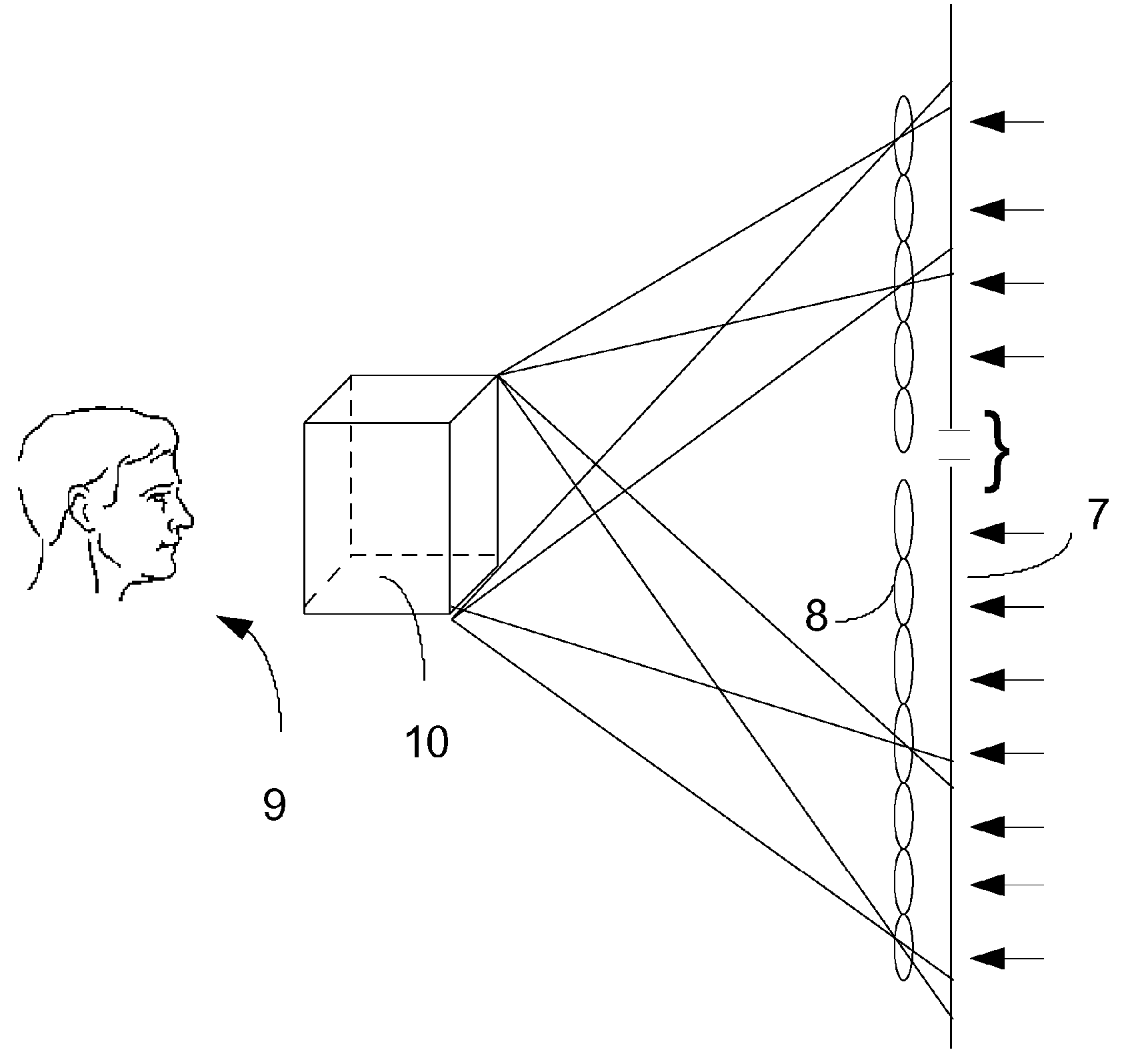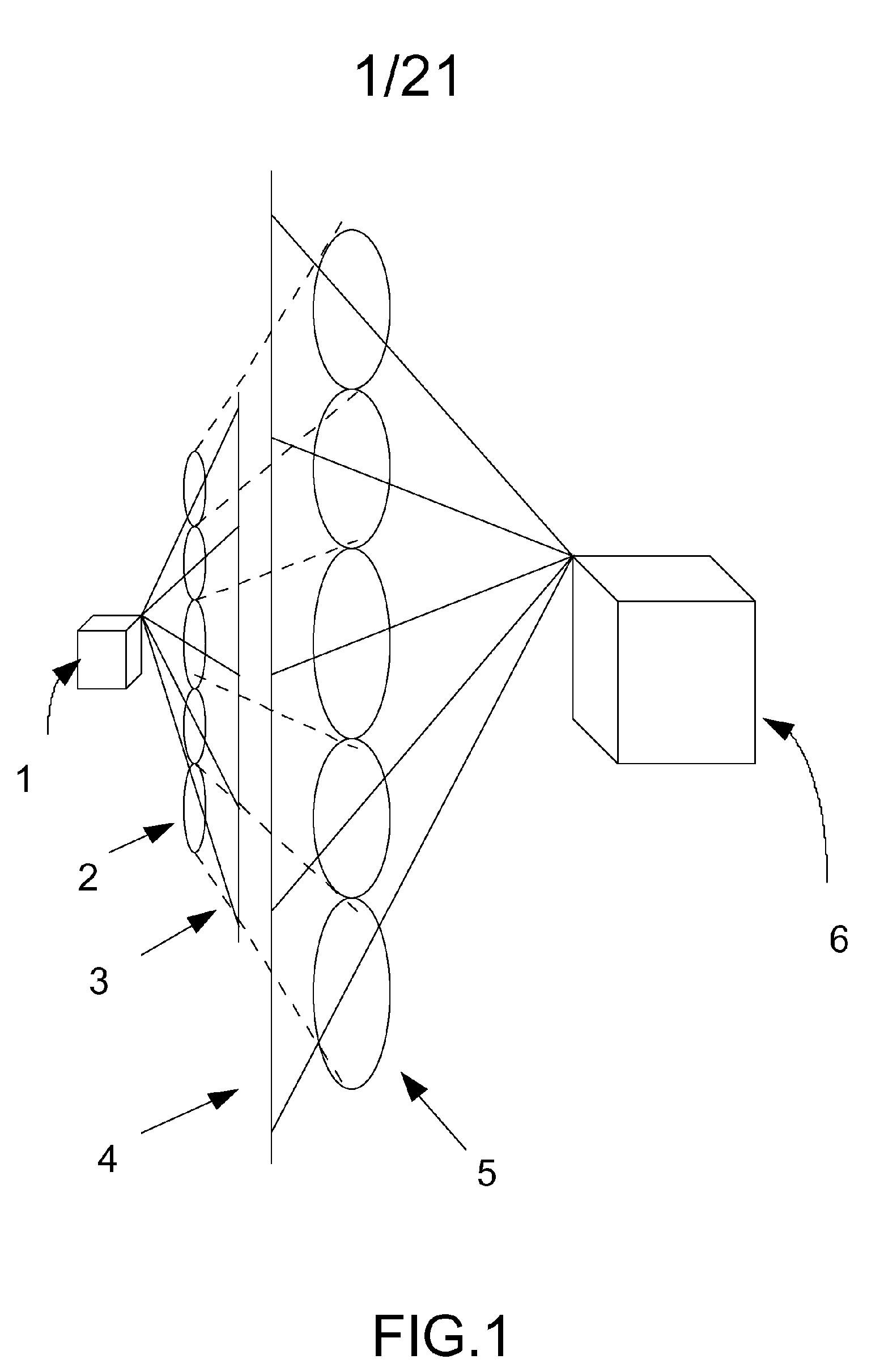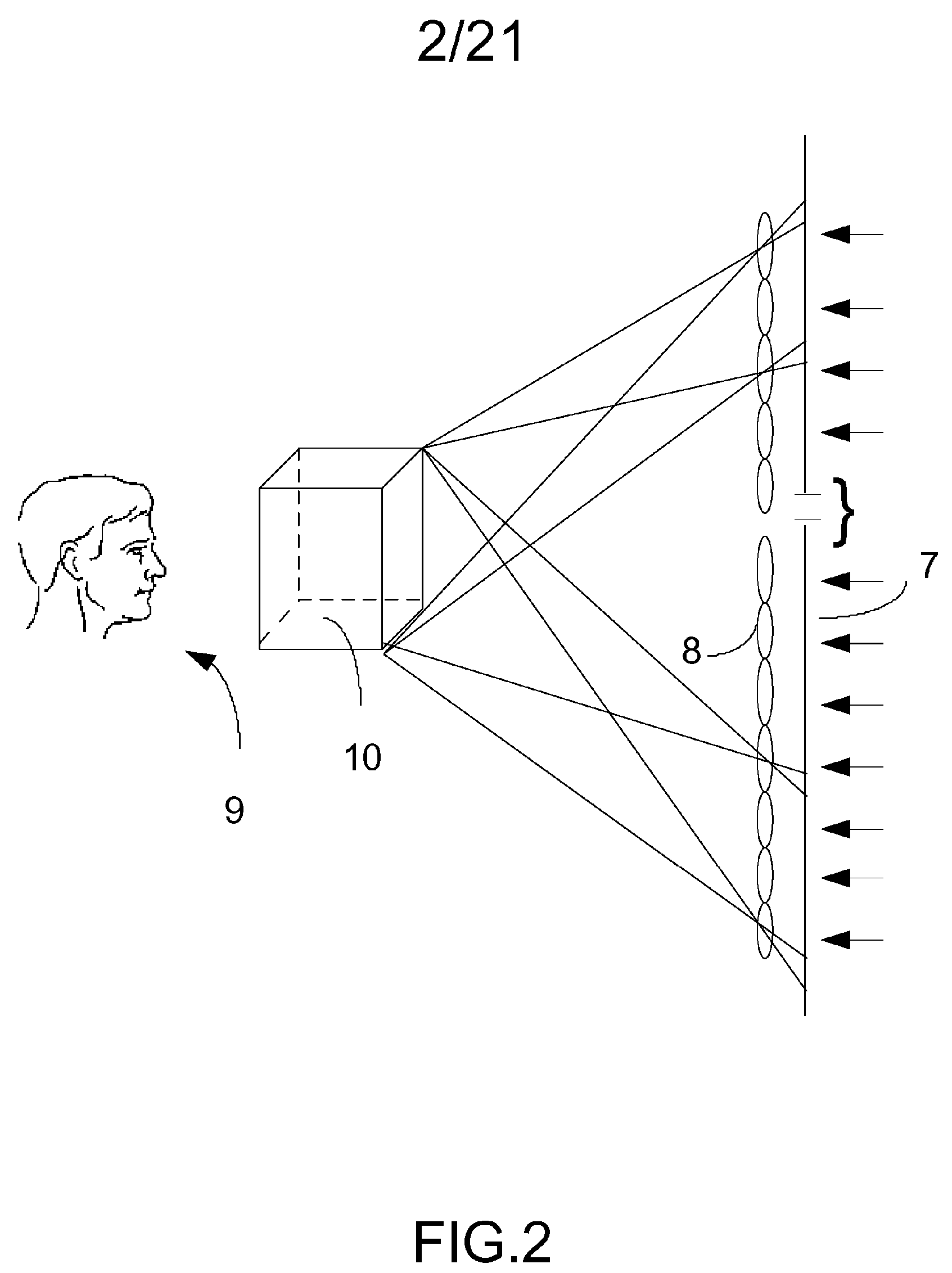Method for creating a holographic screen that reconstructs uniformly magnified three-dimensional images from projected integral photographs
a technology of three-dimensional images and projection, applied in the field of holography and/or integral photography, can solve the problem that the viewing audience should not be able to perform any visual test to determine whether or not the projected 3-dimensional scene truly exists
- Summary
- Abstract
- Description
- Claims
- Application Information
AI Technical Summary
Problems solved by technology
Method used
Image
Examples
Embodiment Construction
[0045] The present invention, in all its embodiments, is based upon a method that permits magnification of a 3-dimensional image produced from a photograph, hologram, optical system or other system or device, regardless of the medium or the method, in such manner as to preserve the depth to height and width relationship of the image as it existed prior to magnification. This method requires the 3-dimensional image prior to magnification to be rendered as an array of 2-dimensional images by some form of imaging array or matrix lens array, such as a fly's eye lens. Were this array of 2-dimensional images to be magnified by some magnification factor, and then viewed or projected through a new matrix lens array that has been scaled up from the lens array that produced the original array of 2-dimensional images, such that the scaling factor is equal to the magnification (i.e., the focal length and the distances between the centers of the lenslets must be multiplied by the same magnificat...
PUM
 Login to View More
Login to View More Abstract
Description
Claims
Application Information
 Login to View More
Login to View More - R&D
- Intellectual Property
- Life Sciences
- Materials
- Tech Scout
- Unparalleled Data Quality
- Higher Quality Content
- 60% Fewer Hallucinations
Browse by: Latest US Patents, China's latest patents, Technical Efficacy Thesaurus, Application Domain, Technology Topic, Popular Technical Reports.
© 2025 PatSnap. All rights reserved.Legal|Privacy policy|Modern Slavery Act Transparency Statement|Sitemap|About US| Contact US: help@patsnap.com



